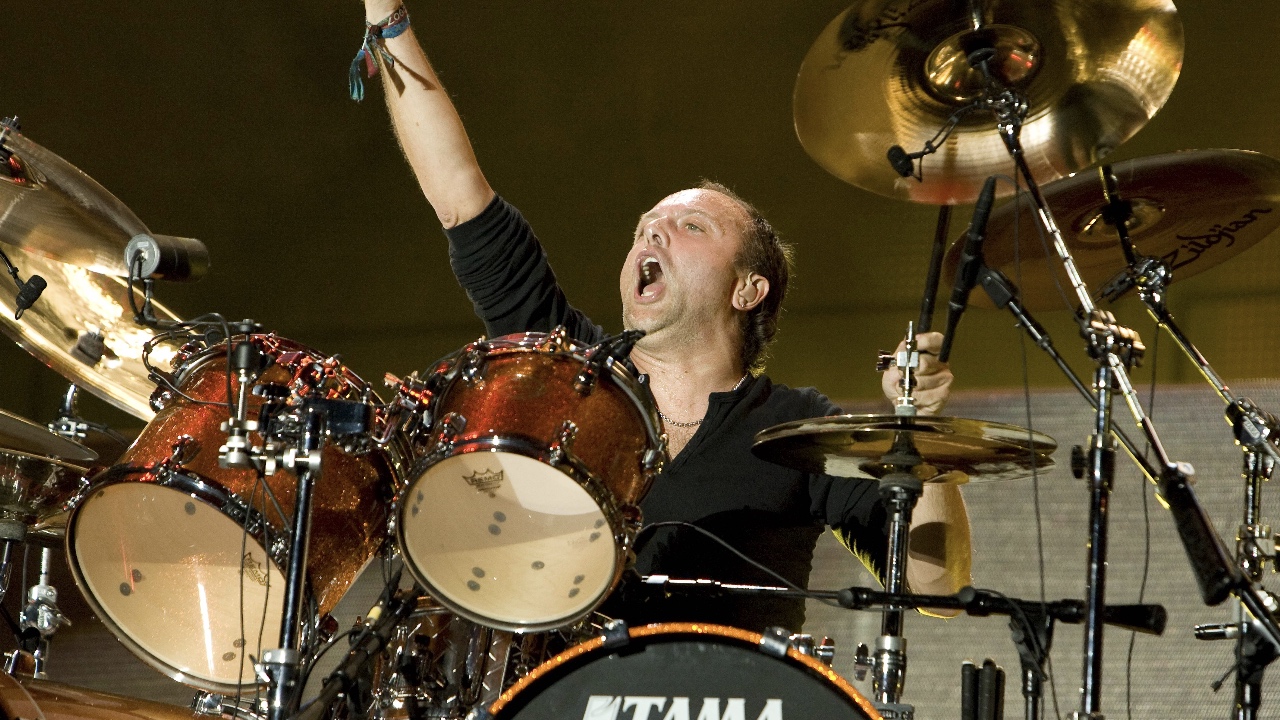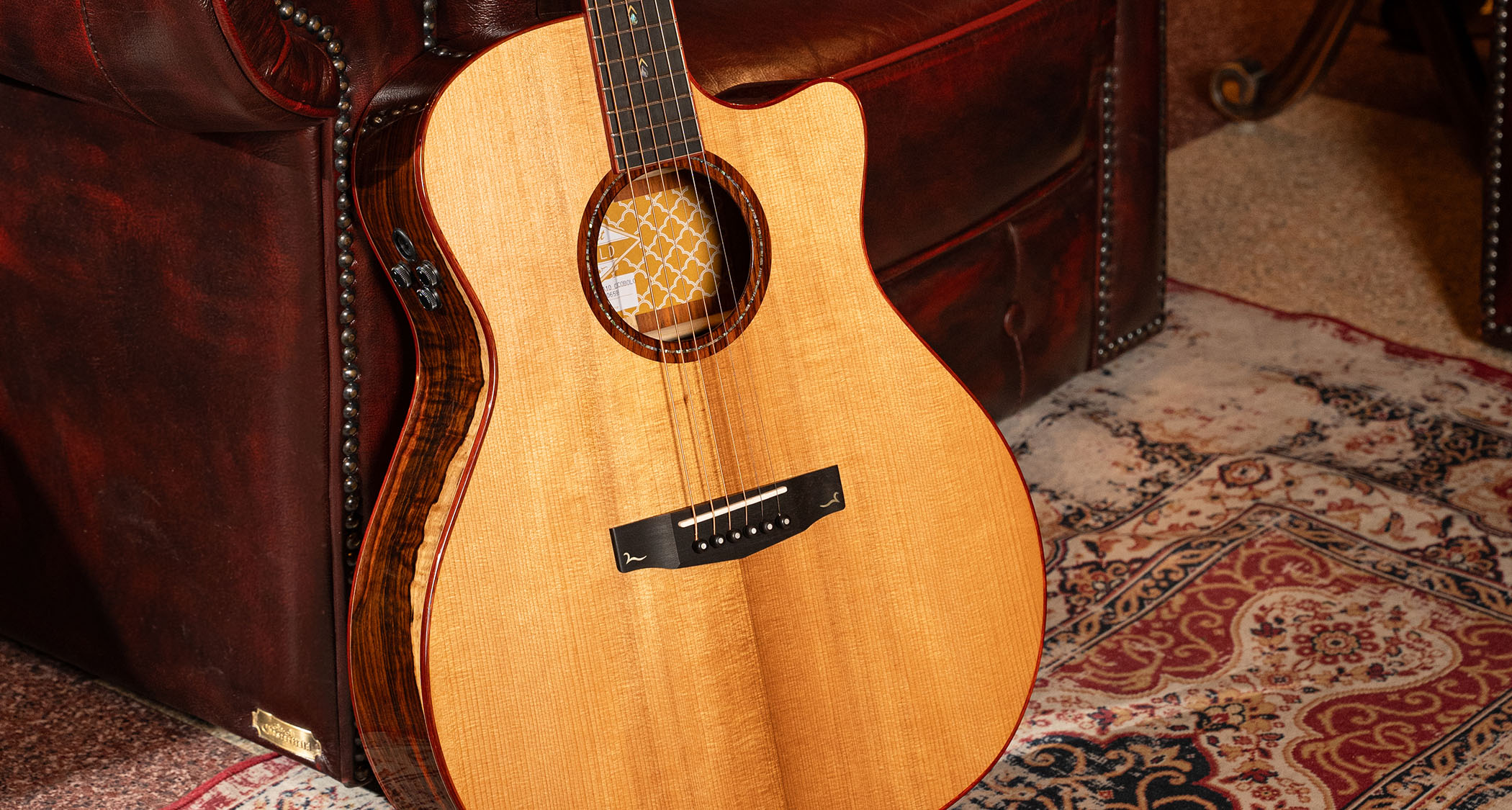In defence of…Metallica's Lars Ulrich
As Metallica’s Black Album turns 30, we’re in Lars’ corner

From the outspoken big mouth taking on Napster, to the Glastonbury regular or radio show host, there are many sides to Lars Ulrich. But to us there is only one Lars, and he belongs behind a drum kit acting as co-spokesman for the biggest metal band on the planet.
However, especially in recent times, it seems poor Lars takes a bashing whenever his name is mentioned in relation to his day job. Whether it’s that snare sound, fans comparing him to modern day technical powerhouses, or simply saying he’s lost his ability to deliver the goods live. So, as Metallica’s Black Album turns 30, here’s why we’re still backing the Great Dane!
He influenced your heroes
You’ve bought a double pedal, learnt the quick 16th-note bursts from Blackened and now you’re convinced you’re better than Lars? Well, while the rough and ready approach and sound of some of Metallica’s early recordings may sound simple compared to the notefests we’ve become used to these days, there needs to be a bit of context. Lars was one of the drummers who helped drumming crossover from ‘heavy rock’ into metal as we now know it. Fusing ‘heavy metal’ with punk and progressive ideas helped the style to evolve. Without him, there’d have been no Mike Portnoy, no Joey Jordison, no Mario Duplantier - at least not as we know them.
His parts are iconic
Next time you’re at a band practice, tap out the tom groove from Enter Sandman and see what happens. Our money is on someone playing the riff as soon as they hear you hit the snare on the ‘&’ of beat 4. You don’t even need to be sat at a drum kit for people to recognise when you’re drumming the middle section of One at your desk. And who else could make thousands of people lose their minds with a simple ‘Blat, ba-ba-ba-ba’ on their snare? Part of Lars’ genius is his simplicity, creativity and mindfulness that he’s playing songs in a band, not a drum clinic.
St Anger wasn’t entirely his fault…
A couple of decades ago, Lars Ulrich made the mistake of recording St Anger’s title track with an uncharacteristically ringy snare drum sound, and he’s paying for it to this day. The way Lars tells is, he was hyped-up by James Hetfield’s riff that he immediately jumped behind the kit, forgot to turn his snares on and started recording before declaring “That’s the sound!”. Producer Bob Rock says it was born out of searching for inspiration, placing a Ludwig Vistalite snare on the kit. “That was the sound, and Lars just would not go back.”, he told Tone-Talk in 2020.
“I’m not blaming him, this was about, basically - if you can wrap around a concept - this was the sound of the drums when they were rehearsing the album, it’s basically the closest to them being in that clubhouse, and no matter what everybody says, it kept the band together, and that inspired them to go on. So I’m okay with all the flak I’ve taken. It’s a fucking snare-drum sound, give it a break.”
We have to agree. Would St Anger have sounded better with a more traditionally-Lars snare drum? Probably. Would it have solved the tension in the studio, recruited them a better bassist than Rob Trujillo, stopped Metallica from being caught between two eras of metal and made Dr Phil take off his sweater? We doubt it.
Get the MusicRadar Newsletter
Want all the hottest music and gear news, reviews, deals, features and more, direct to your inbox? Sign up here.
…and the Black Album more than makes up for it
Forget the weird snare sound of St Anger and revisit the Black Album. While you’re there, bask in the sonic brilliance of the drum sound that Lars and Bob Rock masterminded on the band’s most famous album. The bass drum has got the weight to kick you in the chest and the attack to let you hear every note. The toms jump out of the speakers like mini-bass drums while ringing into each other with purity, and then there’s the snare. Lars famously used a Tama Bell Brass (although the kit was actually a Gretsch), hired from Ross Garfield, aka The Drum Doctor.
Nicknamed The Terminator, it’s the same snare that Dave Grohl would hire for the recording of Nevermind, and would also appear on Rage Against The Machine’s debut album, and it sounds like a shotgun being fired by its namesake. Placed in the live room at LA’s One On One (now 17 Hertz) it created one of the most iconic hard rock drum sounds we’ve ever heard.
As an aside, sample company, Chocolate Audio set about recreating the Black Album sound with the help of Ross Garfield and Black Album engineer Mike Tacci. Using the exact Gretsch kit and Tama Bell Brass (still owned by Garfield) they setup in 17 Hertz and captured the kit as closely as possible to the album. The good news for us, is that the resulting sample pack is available to buy and play from our own electronic kits for a criminally low price!
He can still bring it live (despite what you might think)
“My mate saw Metallica at Download and he said Lars couldn’t even keep up with the rest of the band and all their live albums are edited”. Metallica are still one of the top-grossing live rock acts on the planet, one of the few guaranteed headliners at major festivals, and anyone who has seen Metallica live knows that Lars can still play.
Sure, it’s not 1991 and he’s not far off picking up his bus pass, but that’s sort of our point. The expectation that he’s going to play with the energy of a 27 year-old isn’t realistic, but considering a Metallica set is long, diverse and - for a lot of the duration - uptempo, the evidence suggests Lars has a few years in him yet!
He’s responsible for way more than just the drum parts
While the loudmouth attitude Lars displayed in his youth was probably a nightmare for any hope of compromise, Metallica was in no small part his vision too. Indeed, he’s helped to shape the arrangement of some of the bands biggest riffs with his sense of what might work, and what should happen.
Indeed, when we asked James Hetfield how much of his rhythm style stems from Lars, his response was, “Quite a bit because, as I say, I have a lot of room to lay down. I might not be able to be as free as possible on some stuff because when I get loose everything goes a little wobbly!
But I’m able to show Lars some drum stuff and he’s able to show me riff stuff, you know? I’m a frustrated drummer and he’s a frustrated singer-guitarist! So it’s really great that we’re able to accept each other’s dreams that way and see it as a positive thing, not just, ‘Get outta my territory!’”

I'm a freelance member of the MusicRadar team, specialising in drum news, interviews and reviews. I formerly edited Rhythm and Total Guitar here in the UK and have been playing drums for more than 25 years (my arms are very tired). When I'm not working on the site, I can be found on my electronic kit at home, or gigging and depping in function bands and the odd original project.
"Reggae is more freeform than the blues. But more important, reggae is for everyone": Bob Marley and the Wailers' Catch a Fire, track-by-track
“Part of a beautiful American tradition”: A music theory expert explains the country roots of Beyoncé’s Texas Hold ‘Em, and why it also owes a debt to the blues









